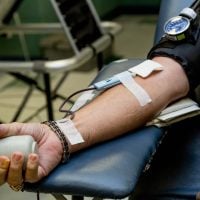Post-conflict rehabilitation is a critical process that aims to restore and rebuild communities that have been devastated by war or violent conflict. The aftermath of such turmoil often leaves behind a landscape of destruction, both physical and psychological. Communities face challenges such as displacement, loss of livelihoods, and the breakdown of social structures.
Rehabilitation efforts are essential not only for restoring infrastructure but also for fostering social cohesion and rebuilding trust among community members. This multifaceted approach requires a combination of humanitarian aid, development assistance, and long-term strategies to ensure sustainable recovery. The complexity of post-conflict rehabilitation necessitates a collaborative effort among various stakeholders, including governments, international organizations, non-governmental organizations (NGOs), and the private sector.
Each entity plays a unique role in addressing the diverse needs of affected populations. From providing immediate relief to facilitating long-term development initiatives, the collective impact of these efforts can significantly influence the trajectory of recovery in post-conflict settings. However, the success of these initiatives largely hinges on adequate funding and resources, making it imperative to explore the various funding opportunities available for post-conflict rehabilitation.
Understanding the Importance of Funding Programs
Importance of Funding in Post-Conflict Rehabilitation
Funding not only supports immediate relief efforts but also lays the groundwork for sustainable development by enabling communities to rebuild their lives and regain their dignity. Moreover, funding programs often come with specific guidelines and frameworks that encourage accountability and transparency in the use of resources.
Role of Funding in Promoting Accountability and Transparency
This is particularly important in post-conflict settings where trust in institutions may be low due to past grievances. By adhering to established funding protocols, organizations can foster greater confidence among stakeholders and beneficiaries alike.
Benefits of Well-Structured Funding Programs
Well-structured funding programs can facilitate collaboration among various actors, ensuring that resources are utilized efficiently and effectively to maximize impact. This collaborative approach helps in addressing the complex needs of post-conflict communities, ultimately contributing to their recovery and development.
Maximizing Impact Through Efficient Resource Utilization
Ultimately, the success of post-conflict rehabilitation efforts depends on the effective use of funding programs, emphasizing the need for careful planning, coordination, and implementation to ensure that resources are used in the best possible way to support affected communities.
Government Funding Programs for Post-Conflict Rehabilitation
Governments play a pivotal role in funding post-conflict rehabilitation initiatives, often through dedicated agencies or ministries focused on development and humanitarian assistance. These programs may include direct financial support for reconstruction projects, grants for NGOs working in affected areas, or loans aimed at stimulating economic growth. For instance, many countries have established national development funds specifically designed to address the needs of regions recovering from conflict.
These funds can be instrumental in financing infrastructure projects such as roads, schools, and healthcare facilities. In addition to national programs, governments may also collaborate with international organizations to access additional funding sources. Multilateral institutions like the World Bank and regional development banks often provide financial assistance for post-conflict recovery efforts.
These partnerships can enhance the scale and scope of rehabilitation initiatives, allowing for a more comprehensive approach to rebuilding communities. Furthermore, government funding programs often prioritize projects that promote social cohesion and reconciliation, recognizing that healing from conflict requires more than just physical reconstruction.
International Funding Programs for Post-Conflict Rehabilitation
International funding programs are crucial for supporting post-conflict rehabilitation efforts, particularly in countries with limited domestic resources. Organizations such as the United Nations Development Programme (UNDP), the International Committee of the Red Cross (ICRC), and various bilateral aid agencies provide significant financial assistance aimed at rebuilding war-torn societies. These programs often focus on key areas such as governance, rule of law, and economic recovery, recognizing that sustainable peace is contingent upon addressing the root causes of conflict.
One notable example is the Peacebuilding Fund established by the United Nations, which aims to support countries in transition from conflict to peace. This fund provides flexible financing to address immediate needs while also investing in long-term development strategies. By prioritizing projects that promote inclusivity and participation from local communities, international funding programs can help ensure that rehabilitation efforts are aligned with the aspirations and needs of those most affected by conflict.
Non-Governmental Organization Funding Programs for Post-Conflict Rehabilitation
Non-governmental organizations (NGOs) are often at the forefront of post-conflict rehabilitation efforts, providing essential services and support to affected populations. Many NGOs rely on a diverse array of funding sources to sustain their operations, including grants from foundations, government contracts, and donations from individuals and corporations. These funding programs enable NGOs to implement targeted interventions that address specific community needs, such as psychosocial support for trauma survivors or vocational training for displaced individuals.
In addition to traditional funding sources, some NGOs have begun exploring innovative financing mechanisms such as social impact bonds or crowdfunding campaigns. These approaches can provide additional resources while also engaging local communities in the rehabilitation process. By leveraging technology and social media platforms, NGOs can reach a broader audience and mobilize support for their initiatives.
Ultimately, the adaptability and resourcefulness of NGOs in securing funding are vital for ensuring that rehabilitation efforts remain responsive to the evolving needs of communities in crisis.
Private Sector Funding Programs for Post-Conflict Rehabilitation
The private sector has increasingly recognized its role in supporting post-conflict rehabilitation through corporate social responsibility (CSR) initiatives and philanthropic contributions. Many companies are now actively seeking opportunities to invest in communities recovering from conflict as part of their commitment to sustainable development. This can take various forms, including financial donations, in-kind support, or partnerships with NGOs to implement specific projects.
Private sector funding can significantly enhance the capacity of rehabilitation efforts by providing not only financial resources but also expertise and innovation. For example, businesses may offer technical assistance in areas such as infrastructure development or job creation strategies. Additionally, engaging the private sector can help stimulate local economies by creating jobs and fostering entrepreneurship among community members.
By aligning their interests with those of affected populations, private sector actors can contribute to building resilient communities capable of thriving in the aftermath of conflict.
Criteria and Eligibility for Funding Programs
Navigating the landscape of funding programs for post-conflict rehabilitation requires a clear understanding of eligibility criteria and application processes. Each funding source typically has its own set of guidelines that outline who can apply, what types of projects are eligible for support, and how funds can be utilized. For instance, government funding programs may prioritize projects that align with national development goals or address specific humanitarian needs identified by local authorities.
In addition to meeting eligibility requirements, organizations seeking funding must also demonstrate their capacity to effectively implement proposed projects. This often involves providing detailed project proposals that outline objectives, methodologies, expected outcomes, and budgetary considerations. Funders are increasingly looking for evidence-based approaches that incorporate lessons learned from previous interventions.
Therefore, organizations must be prepared to showcase their track record and ability to deliver results in challenging environments.
Impact and Success Stories of Funding Programs for Post-Conflict Rehabilitation
The impact of funding programs on post-conflict rehabilitation can be profound, transforming lives and communities in ways that extend far beyond immediate relief efforts. Success stories abound where targeted funding has led to significant improvements in living conditions, access to education, and economic opportunities for individuals affected by conflict. For example, initiatives funded by international organizations have successfully rebuilt schools and healthcare facilities in war-torn regions, enabling children to return to education and families to access essential services.
Moreover, funding programs that prioritize community engagement have demonstrated remarkable success in fostering social cohesion and reconciliation among diverse groups. By involving local populations in decision-making processes and project implementation, these initiatives empower communities to take ownership of their recovery journey. As a result, beneficiaries often report increased trust in institutions and a renewed sense of hope for the future.
These success stories serve as powerful reminders of the transformative potential of well-structured funding programs in post-conflict settings. In conclusion, post-conflict rehabilitation is a complex yet vital process that requires a multifaceted approach supported by diverse funding sources. Understanding the various government, international, NGO, and private sector funding programs available is essential for organizations seeking to make a meaningful impact in affected communities.
By navigating eligibility criteria effectively and leveraging innovative financing mechanisms, stakeholders can contribute to building resilient societies capable of overcoming the challenges posed by conflict. Ultimately, the success stories emerging from these efforts highlight the importance of sustained investment in post-conflict rehabilitation as a pathway toward lasting peace and development.









































